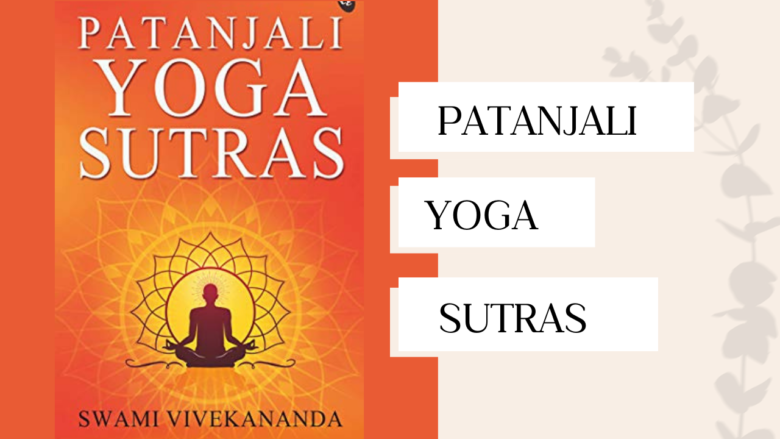Introduction to Patanjali Yoga Sutras
The Patanjali Yoga Sutras are a collection of 196 aphoristic teachings compiled by Sage Patanjali, providing profound insights into the philosophy and practice of yoga. These ancient texts are considered the cornerstone of classical yoga, offering a comprehensive guide to achieving physical, mental, and spiritual well-being. Whether you are a seasoned yogi or new to the path of wellness, understanding the Patanjali Yoga Sutras can significantly enhance your practice and daily life.
Number of Patanjali Yoga Sutras
The Patanjali Yoga Sutras consist of 196 concise aphorisms, systematically divided into four chapters or “padas.” Each chapter focuses on a different aspect of the practice and philosophy of yoga. The first chapter, Samadhi Pada, discusses the nature of enlightenment and the means to attain it. The second, Sadhana Pada, outlines the practices necessary for achieving the path of yoga. The third, Vibhuti Pada, explores the supernatural powers that can be acquired through yoga, while the fourth and final chapter, Kaivalya Pada, delves into the nature of ultimate liberation and freedom. These 196 sutras collectively provide a comprehensive framework for understanding and integrating the principles of yoga into our everyday lives.
Understanding the Eight Limbs of Yoga
At the heart of the Yoga Sutras lies the Ashtanga Yoga, or the Eight Limbs of Yoga, which serves as a roadmap for living a meaningful and purposeful life. These limbs are:
- Yama: Ethical principles that include non-violence (Ahinsa), truthfulness (Satya), non-stealing (Asteya), sexual restraint (Brahmacharya), and non-possessiveness (Aparigraha).
- Niyama: Personal disciplines such as cleanliness (Shaucha), contentment (Santosha), austerity (Tapas), self-study (Svadhyaya), and surrender to a higher power (Ishvara Pranidhana).
- Asana: Physical postures aimed at preparing the body for meditation.
- Pranayama: Breath control techniques to enhance life force energy.
- Pratyahara: Withdrawal of the senses from external objects.
- Dharana: Concentration and focus on a single point.
- Dhyana: Meditation, leading to a state of uninterrupted flow of concentration.
- Samadhi: The ultimate state of union with the divine or universal consciousness.
The Importance of Ethics and Self-Discipline in Yoga Practice
The first two limbs, Yama and Niyama, emphasize the importance of ethical behavior and self-discipline. These foundational principles shape the character and conduct of a yogi, promoting harmony with oneself and the surrounding world. Practicing these virtues helps in cultivating a balanced and healthy lifestyle, free from the distractions and temptations that derail one’s spiritual journey.
Techniques for Physical, Mental, and Spiritual Development
The subsequent limbs—Asana, Pranayama, Pratyahara, Dharana, Dhyana, and Samadhi—focus on techniques for holistic development.
- Asana: Regular practice of asanas fosters physical health, flexibility, and strength.
- Pranayama: Techniques like alternate nostril breathing (Nadi Shodhana) and bellows breath (Bhastrika) enhance respiratory efficiency and mental clarity.
- Pratyahara: Practices such as mindfulness and sensory withdrawal create a conducive environment for inner peace.
- Dharana and Dhyana: Concentration exercises and meditation practices like focusing on the breath or a mantra deepen mental focus and lead to heightened states of awareness.
- Samadhi: Achieving this state results in profound spiritual realization and unity with the cosmos.
Applying the Sutras to Modern-Day Life and Wellness
The timeless wisdom of the Patanjali Yoga Sutras is as relevant today as it was thousands of years ago. In our fast-paced, stress-filled lives, these teachings offer practical solutions for maintaining balance and achieving well-being. Here’s how you can apply the Sutras in modern-day settings:
- Mindfulness: Incorporate mindfulness practices in daily activities to reduce stress and increase presence.
- Self-Reflection: Regularly introspect and align your actions with ethical principles.
- Breath Control: Use pranayama techniques to manage anxiety and enhance mental clarity.
- Meditation: Dedicate time each day for meditation to cultivate inner peace and resilience.
Conclusion – Encouragement for Integrating Patanjali’s Teachings
The Patanjali Yoga Sutras provide a profound framework for achieving a balanced and fulfilling life. By integrating these teachings into your daily routine, you can enhance your physical health, mental clarity, and spiritual growth. Whether you are practicing in the serene atmosphere of Rishikesh with aatmyogashala or incorporating these principles at home, the journey toward self-realization and wellness is both transformative and rewarding.
FAQ
1. What are the Patanjali Yoga Sutras?
The Patanjali Yoga Sutras are a collection of 196 aphorisms that offer guidance on the philosophy and practice of yoga, compiled by the sage Patanjali.
2. What are the Eight Limbs of Yoga?
The Eight Limbs of Yoga, or Ashtanga Yoga, are a framework outlined in the Yoga Sutras, consisting of Yama, Niyama, Asana, Pranayama, Pratyahara, Dharana, Dhyana, and Samadhi.
3. How can the Patanjali Yoga Sutras benefit modern individuals?
The Sutras provide timeless wisdom for achieving physical health, mental clarity, and spiritual well-being, making them highly relevant for today’s fast-paced lifestyles.
4. What is the importance of Yama and Niyama in yoga practice?
Yama and Niyama are ethical principles and personal disciplines that form the foundation of a balanced and harmonious yoga practice.
5. How can I start integrating the Patanjali Yoga Sutras into my daily life?
Begin by practicing mindfulness, ethical behavior, breath control, and meditation. Consistent application of these principles will lead to holistic development and well-being.
—
By understanding and integrating the teachings of the Patanjali Yoga Sutras, you embark on a transformative journey toward a healthier, more balanced, and spiritually enriched life. Start your journey today and experience the profound benefits of this timeless wisdom.

